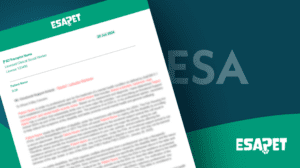Pet Insurance Coverage: What Pet Insurance Companies Cover in 2026?

Pet insurance is a valuable safety net for pet owners. It helps to cover unexpected medical expenses for your furry friends. Pet insurance coverage includes a range of treatments and surgeries, which can ease the financial burden when your pet needs care.
Pet health insurance means you can decide what’s best for your pet’s health rather than worrying about the cost.
One of the biggest benefits is the peace of mind it offers. Knowing that you’re prepared for any sudden illnesses can help reduce stress. Pet insurance coverage ensures that your pet gets the best possible care without straining your finances.
Understanding Pet Insurance Coverage
Pet health insurance is a type of insurance policy designed to cover various medical expenses for your pets. Like human health insurance, it covers a range of treatments, surgeries, and routine care. The primary benefit of having pet health insurance is the financial protection it offers.
It helps mitigate the high costs of veterinary care. It ensures that your pet receives the necessary medical attention without significantly damaging your finances. Also, knowing that you are prepared for unexpected illnesses can provide peace of mind.
Remember |
By investing in a good pet health insurance plan, you can focus more on your pet’s well-being rather than worrying about the cost of their care. |
Types of Pet Insurance Plans
Exploring the various types of pet insurance coverage is a critical step for pet owners. It ensures their animals receive the best care possible without facing overwhelming costs. Each pet policy caters to different aspects of pet care, easing stress when medical issues arise.
Accident and Illness Coverage
It addresses various medical needs that could arise from sudden incidents. This option ensures pet owners can afford the best care when their pets face challenges.
Accident-Only Coverage:
This type of insurance focuses on injuries resulting from accidents. It is a more affordable option compared to comprehensive plans. However, it excludes illness-related medical treatment.
Pet Wellness and Health Maintenance Plans
These plans focus on maintaining your pet’s health through routine check-ups, vaccinations, and preventive care. They are typically offered as add-ons to comprehensive or accident-only insurance plans.
Chronic Conditions Coverage
This plan covers ongoing expenses for long-term illnesses. These illnesses can be diabetes, cancer, and hip dysplasia. It is essential for pets with conditions that require continuous treatment and monitoring.
Detailed Pet Insurance Coverage Breakdown
Understanding the specifics of what pet insurance covers is essential for making an informed decision. This detailed breakdown highlights the various aspects of coverage. It ensures you can choose a plan that meets your pet’s unique needs and provides peace of mind.
Accidents and Injuries
Accidents can happen anytime, and coverage of such events is crucial. It generally includes protection against various types of injuries. This type ensures your pet gets the necessary attention without the financial burden.
- ACL ruptures
- Broken bones
- Toxic ingestions
Common Illnesses
Pets can suffer from a range of common illnesses, and an accident and illness plan covers these conditions. Knowing that these ailments are covered by pet insurance can help you provide timely treatment and care for your pet.
- Ear infections
- Urinary tract infections
- Vomiting
Chronic Illnesses
Chronic illnesses require ongoing management and can be costly over time. This type often includes coverage for chronic conditions, helping you manage your pet’s long-term health needs with ease.
- Diabetes
- Arthritis
- Allergies
Hereditary and Congenital Conditions
Some pets are prone to hereditary and congenital conditions, which can lead to significant health issues. Insurance policies that cover these conditions ensure your pet can receive treatment without excessive financial strain.
- Hip dysplasia
- Eye disorders
Behavioral Issues
Behavioral issues can be challenging for pets and their owners. Some insurance plans offer coverage for treatments that address these problems. They can help improve your pet’s quality of life.
- Aggression
- Destructive chewing
Alternative and Holistic Treatments
Some insurance plans cover alternative and holistic treatments. These treatments can provide additional options for managing your pet’s health.
- Acupuncture
- Chiropractic care
Prescription Medication, Food, and Supplements
A pet insurance policy may also cover the costs of prescription medications, special dietary needs, and supplements. This helps to ensure your pet’s ongoing health and well-being.
- Prescription medication
- Prescription food
- Supplements
Diagnostic Tests and Procedures
Accurate diagnosis is essential for effective treatment. This insurance often includes coverage for various diagnostic tests and procedures. It helps to identify health issues promptly and accurately.
- Blood tests
- Ultrasounds
- Surgeries
Exclusions to Pet Insurance Plans Coverage
Understanding what pet health insurance does not cover is as important as knowing what it does. Being aware of the common exclusions helps you prepare for any out-of-pocket expenses that might arise. It helps ensure you are fully informed when selecting a policy.
Pre-existing Conditions
Pre-existing conditions are health issues your pet experienced before the start of your policy. Most insurance policies exclude these conditions to avoid covering ongoing issues. It is important to note these exclusions to avoid unexpected costs.
- Diabetes
- Arthritis
Cosmetic or Elective Procedures
These procedures are generally excluded from pet insurance coverage unless medically necessary. These procedures are often considered non-essential. Knowing this can help you plan for extra costs if you choose such procedures.
- Tail docking
- Ear cropping
Breeding Costs
Costs associated with breeding, pregnancy, and related complications are typically not covered. These exclusions are standard as they are considered part of planned breeding activities rather than unexpected health issues. Be sure to check if you need extra coverage for breeding.
- Pregnancy complications
- Breeding-related vet visits
Routine and Preventive Care
Routine and preventive care are not usually included in standard accident and illness plans. You need to buy extra wellness coverage. These exclusions ensure that the basic insurance plans remain affordable while covering more significant health issues.
- Annual vaccinations
- Teeth cleaning
How Often Should You Take Your Dog To The Vet?
Pet Liability
Insurances generally do not cover liability issues such as injuries or damage caused by your pet. These situations are typically addressed by homeowners or renters insurance. Being aware of this can help you ensure you have the right type of coverage for liability issues.
- Bites or injuries caused by your pet
- Damage to property
Evaluating Pet Insurance Companies
This is a critical step in choosing the best coverage for your furry friend. By understanding the different options available, you can make an informed decision. This will help you get the best care for your pet while fitting within your budget.
Pet Insurance Coverage Options
Most pet insurance companies provide various plans to suit different needs. These plans range from basic accident coverage to comprehensive wellness plans. Knowing the types of plans can help you choose the best one for your pet’s needs.
- Accident
- Illness
- Wellness
Pet Insurance Cost and Pet Insurance Premiums
Pet insurance costs vary widely based on your pet’s age, breed, and location. An accident and illness plan costs around $676 annually for dogs and $383 for cats.
- Accident and illness: The average cost for dogs is $676, and for cats, it is $383, depending on age, breed, location, and coverage amount.
- Accident-only: Average costs in $204 for dogs and $116 for cats: type of coverage, deductible, reimbursement level.
Exclusions and Limitations of Pet Insurance
Most pet insurance companies have specific exclusions. These exclusions can include pre-existing conditions and waiting periods before coverage starts. Knowing these can help you avoid surprises and protect your pet.
- Pre-existing conditions
- Cosmetic procedures
- Waiting periods
Reimbursement and Deductibles in Pet Insurance Policies
Reimbursement is the part of the vet bill repaid after you meet your deductible. Deductible options can vary. It lets you choose a plan that fits your budget and expected healthcare needs.
The process involves paying your vet bills upfront and submitting a claim to the pet insurance company. Once approved, you receive reimbursement based on the terms of your policy. For example, if your plan has an 80% reimbursement rate, you would receive 80% of the covered costs.
Deductibles can be either annual or per incident, depending on the policy. An annual deductible means you pay a set amount each year before your coverage kicks in. A per-incident deductible means you pay a deductible for each new condition or incident.
Pet Insurance Additional Features and Benefits
Many pet insurance companies offer unique features and benefits. These can include alternative therapies, behavioral treatments, and even coverage for holistic care. Such benefits can provide comprehensive care options, enhancing your pet’s overall well-being.
Alternative Therapies:
Coverage for treatments such as acupuncture and chiropractic care. It is essential to help manage pain and improve mobility.
Behavioral Treatments:
Coverage for consultations and treatments for behavioral issues like anxiety or aggression. It ensures your pet’s mental health is also taken care of.
Holistic Care:
Some plans include coverage for holistic approaches like herbal supplements and homeopathic treatments. They offer more natural care options.
Check the Best Pet Insurance Plan for Your Pet
FAQs on Coverage of Pet Insurance Plans
Does Pet Insurance Cover Spaying or Neutering?
Most plans do not cover spaying or neutering as part of their standard policies. These procedures are considered routine and elective. Pet insurance typically does not include these procedures.
Does Pet Insurance Cover Dental Care?
Dental care coverage varies significantly among pet insurance providers. Some plans cover dental accidents and injuries. However, if you buy a wellness add-on, some include routine dental care, such as cleanings.
Does Pet Insurance Cover Vaccines?
Vaccines are generally not covered under standard accident and illness plans. They are considered preventive care and fall outside the scope of basic policies. However, if you opt for a wellness plan or preventive care add-on, vaccinations are usually included.
Does Pet Insurance Cover Pre-Existing Conditions?
Most pet insurance plans exclude pre-existing conditions. Some providers may offer limited coverage for curable conditions if the pet has been symptom-free for a certain period. However, pet insurance generally does not cover chronic conditions.
Does Pet Insurance Cover Surgery?
Most pet insurance plans cover surgery. This can include emergency surgeries and surgeries required for illnesses or injuries. It’s important to check your policy to understand the specifics.
Does Pet Insurance Cover Medication?
Yes. Medication is often covered under plans that include accident and illness coverage. This can encompass prescription drugs needed to treat injuries or illnesses. However, coverage for long-term medications for chronic conditions may vary.
How Does Pet Insurance Work?
Pet insurance reimburses you for a portion of your vet bills. You pay a monthly premium, choose a deductible, and select a reimbursement rate (usually between 70% and 90%). After meeting your deductible, you submit a claim, and they reimburse you based on your plan’s terms.
What is the Cost of Pet Insurance?
Pet insurance costs vary based on your pet’s age, breed, and location. On average, an accident and illness plan costs around $676 annually for dogs and $383 for cats. Accident-only plans are cheaper, averaging $204 for dogs and $116 for cats.
Conclusion: Choosing the Best Pet Insurance Plan
Pet insurance provides a vital safety net that can help manage the high costs of veterinary care. It ensures your pet receives the best possible treatment without financial stress. By understanding the different types, you can select a policy that best meets your pet’s unique needs.
Choosing the right plan involves careful evaluation of coverage options, costs, and specific features offered by different providers. It’s important to consider the exclusions and limitations of each plan to avoid surprises.
You can find a pet insurance policy that prioritizes your pet’s health and well-being by comparing various plans. Investing in a good pet insurance plan ensures you can focus more on caring for your pet and less on worrying about unexpected veterinary bills.



